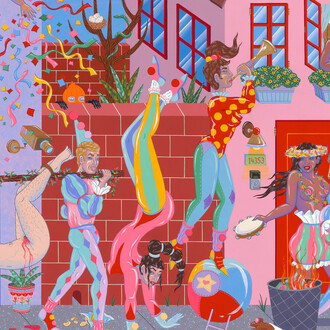A landmark exhibition of Pre-Columbian artifacts and objects assembled over 60 years will be unveiled at the new Barakat Gallery location on La Cienega Boulevard this month. Beauty in the Ancient Americas: Pre-Columbian Aesthetics begins with an opening event Saturday, Sept. 30, 2017 and will stay on view through January 2018.
Pre-Columbian art refers to the visual arts of the indigenous peoples of the America’s before the late 15th century, and encompasses art and artifacts created by such storied cultures as the Olmec, Maya, Inca and Aztec. The exhibit will bring together and display objects and artifacts from such disparate regions as Northwestern Mexico to the plains of Peru. Pieces from a diverse background of cultures, regions, and periods will showcase the profound beauty and creativity expressed by artists in the American continents before the arrival of European tastes and influences.
The exhibit presents an alternative to the traditional eastern vs. western aesthetic. Though Pre-Columbian artists were often separated by both thousands of miles and thousands of years, there is a common foundation and fundamental unity to be found through the whole of Pre-Columbian artistic expression. Individual forms, styles, and characteristics are astonishing in their diversity yet extraordinary in their underlying interconnectivity.
It is a tradition steeped in a boundless dedication to the sacred; to omnipotent Gods and goddesses, ruling lords and kings, great beings of power and providence. As a whole it sought to connect the divine cosmos with the natural world and the ruling authority in a manner that expressed and reassured universal balance and harmony. A dynamic compression of the collective ideal, this art form, through its myriad authors and expressions, portrays a coherent and cohesive aesthetic and symbolic interpretation of the universe; a sense of beauty and order to be shared not only among the contemporary community then but discovered, digested, and enjoyed by a modern audience now.
Catalogued, presented, and displayed by four major media groups that the Pre-Columbian artisans utilized most: Jade, gold, terra-cotta, and stone, the exhibition will compare and contrast different regions, periods, and cultures through the lens of technique, form, and function.
Fayez Barakat, the company’s president and fourth-generation owner, began assembling much of the collection more than 35 years ago, when he first visited Los Angeles and decided to open a gallery here. “It was inevitable for me to fall under the powerful spell of Meso-American antiquities – West Coast collectors had been assembling important holdings of Pre-Columbian art for decades – and there was great potential to build a truly remarkable collection from what was still in private hands,” he recounts. “When I first came to Beverly Hills … I felt like a conquistador standing on the edge of an unknown continent – awestruck, excited, and determined to discover its farthest boundaries. As I was exposed more and more to Pre-Columbian pieces of high quality, my enthusiasm began to increase without limits. I responded to the incredible Energy of the art, to its vitality, its mystery, to its strength, even to its humor. Assembling a major representative group of Pre-Columbian art works became first a passion with me, then an obsession.”
There will be nearly 100 pieces on view, and a catalogue to document the exhibition. Barakat notes, “I have held each and every one of these pieces in my hands and I have responded to it in an analytical and frequently personal way. I have felt the lifeblood of vanished cultures surging through the creative endeavors they have left behind, and it is as if the artworks themselves were alive and capable of speech.”
The original Barakat antiquities company was founded over 125 years ago in Jerusalem. Over the decades, the company has sold and gifted items from its vast collections to the Metropolitan Museum of Art in New York, the Vatican Museum, Getty Foundation, Los Angeles County Museum of Art and numerous others. Collectors the world over have purchased from Barakat. In the U.S., John Huston, Stanley Marcus, co-founder of Neiman Marcus, Proctor Stafford, Joel Silver and a bevy of celebrities have acquired antiquities from Barakat.
Barakat’s first U.S. gallery was opened in Beverly Hills in 1983 by Fayez Barakat. In addition to Pre-Columbian art and artifacts, the Barakat Gallery collections include African, Asian, Biblical, Byzantine, Chinese, Classical, Egyptian, Islamic, Near Eastern, Russian Icon, and Decorative works.
















